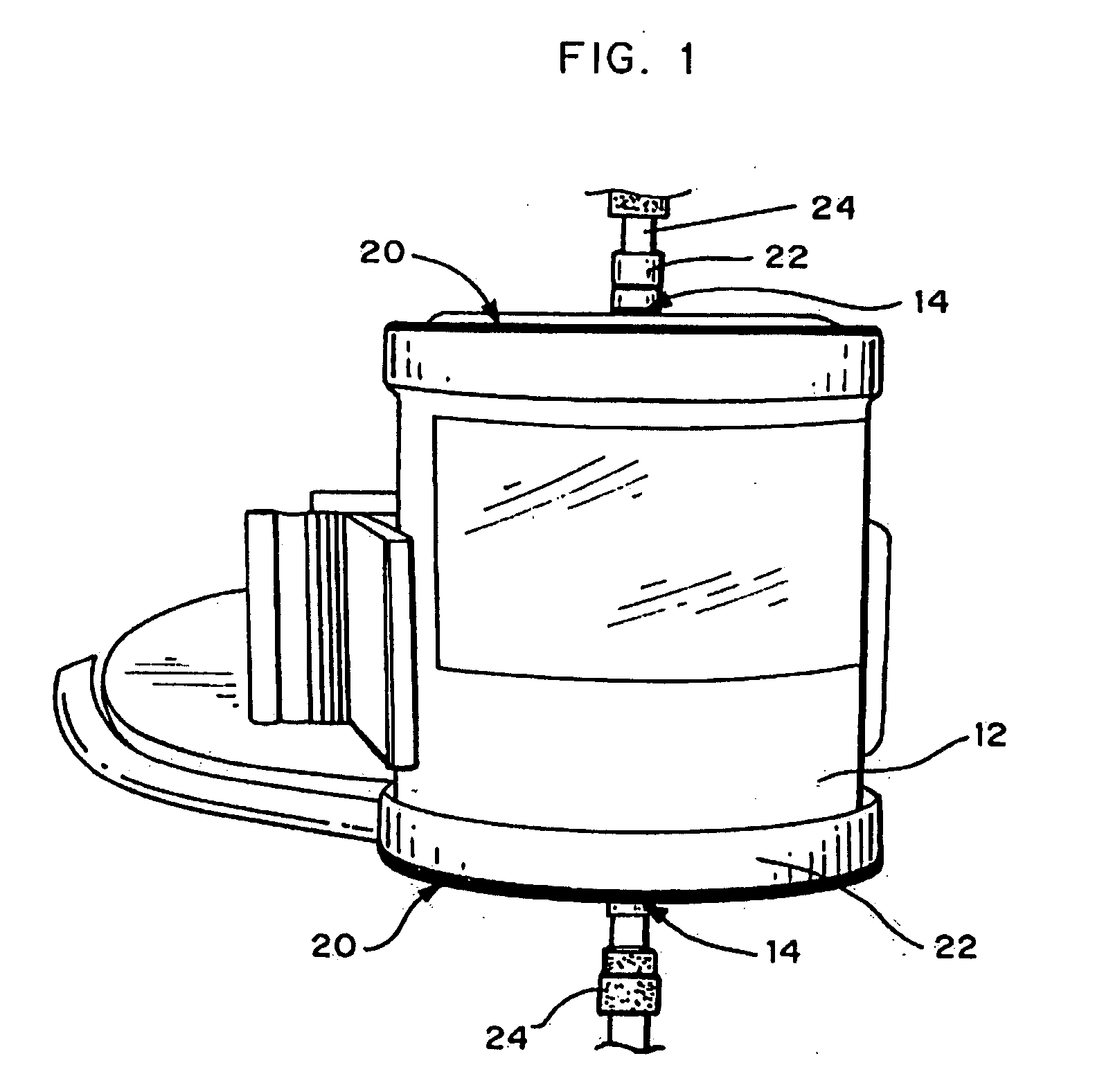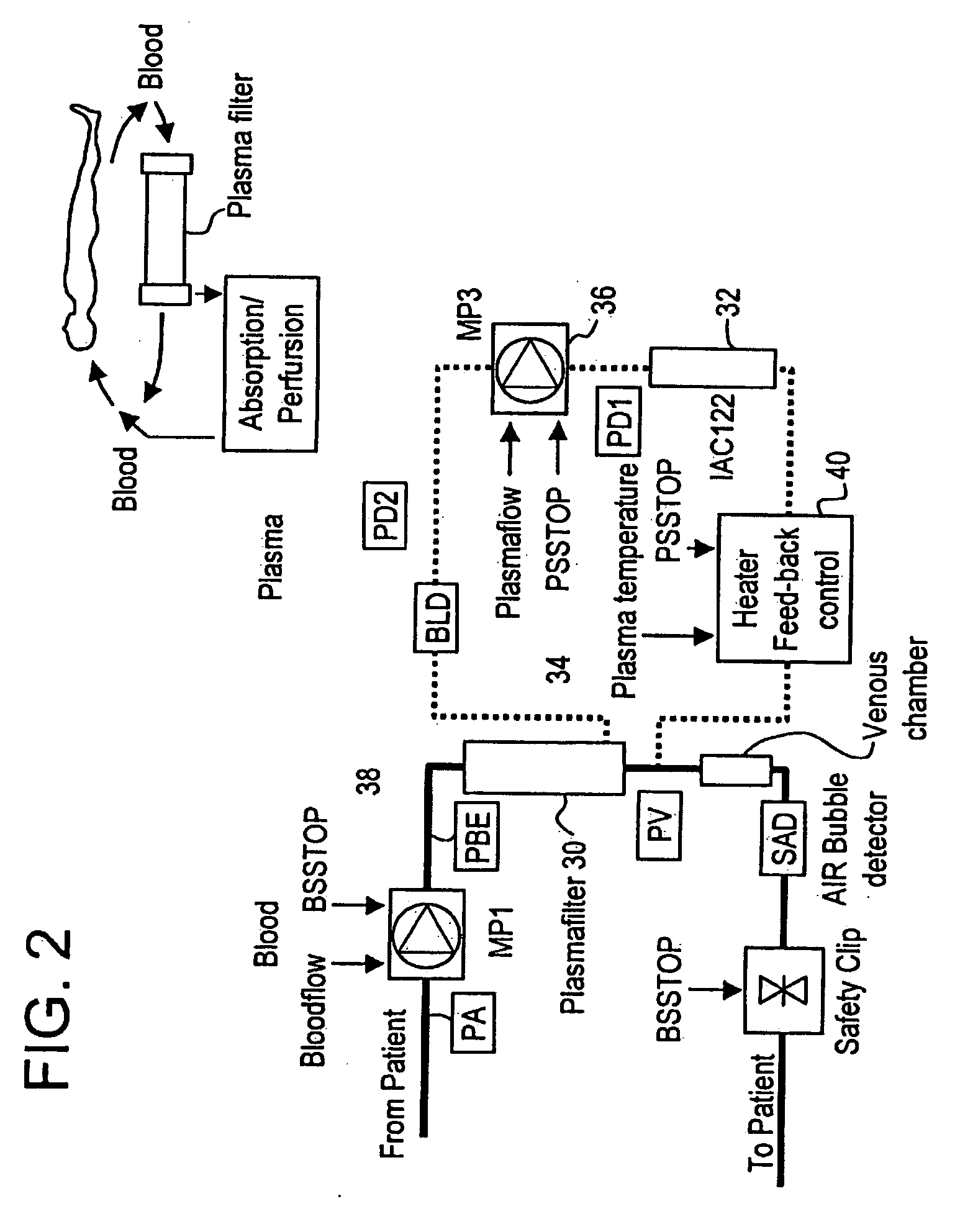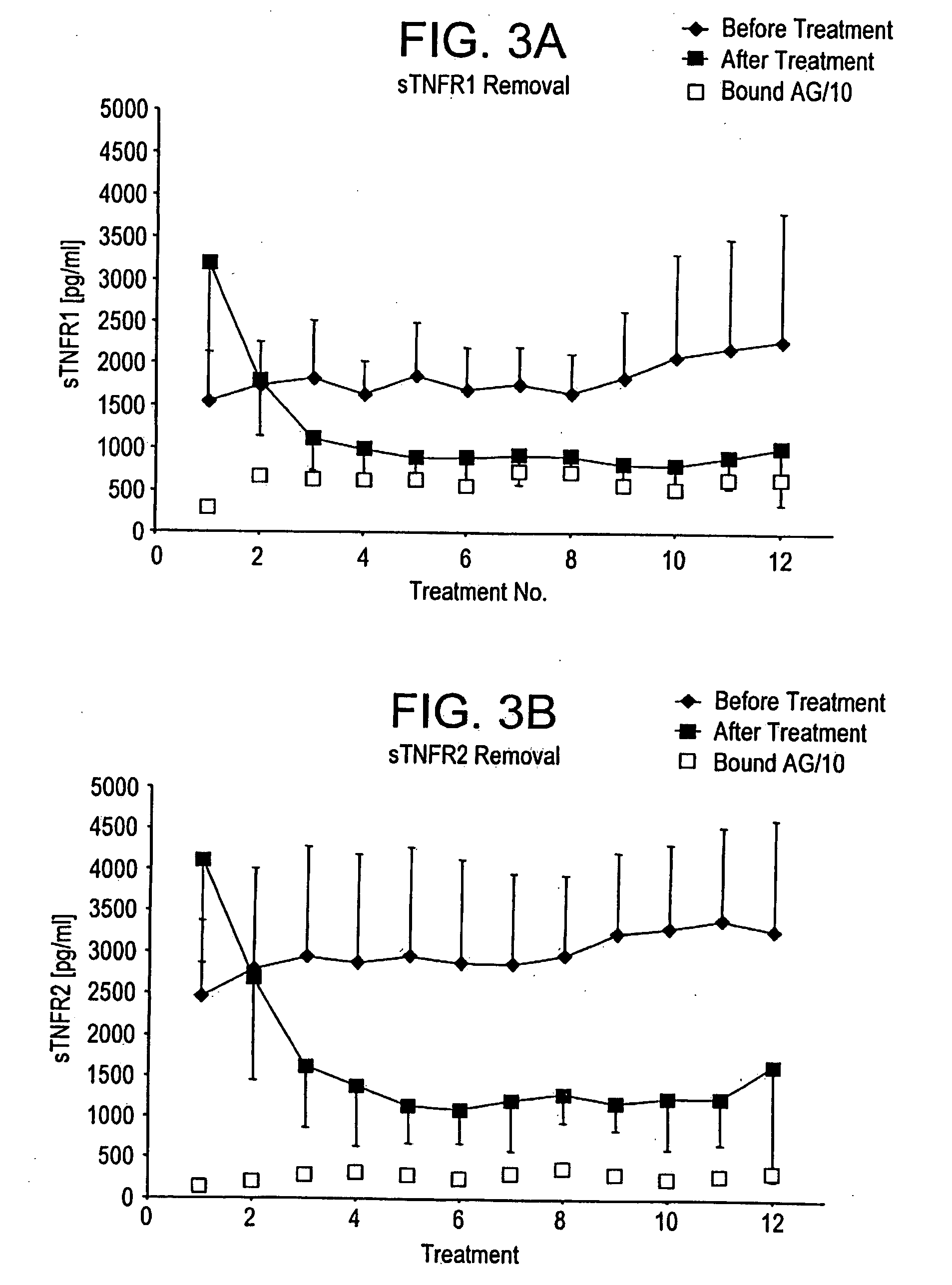Method and system to remove soluble TNFR1, TNFR2, and IL2 in patients
a technology of soluble tumor necrosis factor and soluble tnfr1, applied in the field of immune response enhancement, can solve the problems of inability to cure patients in their own way, inability to prove solid tumor treatment efficacy, and severe side effects, and achieve the effect of remission of diseases
- Summary
- Abstract
- Description
- Claims
- Application Information
AI Technical Summary
Benefits of technology
Problems solved by technology
Method used
Image
Examples
example 1
Clinical Study of the Treatment of Cancer Patients with Plasmapheresis Using Anti-TNFR1, Anti-TNFR2, and Anti-IL-2R Immobilized Antibodies in a Column
[0069] Secretion of TNFα and interleukine-2 that bind via specific receptors to the tumor cell and induce cell death by aptoptosis is the normal response of the immune system in its constant fight against cancer growth. However, local secretion of high levels of soluble receptors for tumor necrosis factor alpha (sTNFR1 and sTNFR2) and interleukin-2 (sIL2R) are believed to be an effective mechanism by the tumor cell to locally block the attack and destruction by the immune system. Systemic removal of these inhibitors by means of extracorporeal apheresis with the goal to reduce the local inhibitor concentrations below the tumor-protective threshold has, therefore, been considered to be a potential therapeutic measure for cancer treatment.
[0070] While this approach had primarily been followed in the past with unspecific removal of prote...
PUM
| Property | Measurement | Unit |
|---|---|---|
| molecular weight | aaaaa | aaaaa |
| flow rates | aaaaa | aaaaa |
| flow rates | aaaaa | aaaaa |
Abstract
Description
Claims
Application Information
 Login to View More
Login to View More - R&D
- Intellectual Property
- Life Sciences
- Materials
- Tech Scout
- Unparalleled Data Quality
- Higher Quality Content
- 60% Fewer Hallucinations
Browse by: Latest US Patents, China's latest patents, Technical Efficacy Thesaurus, Application Domain, Technology Topic, Popular Technical Reports.
© 2025 PatSnap. All rights reserved.Legal|Privacy policy|Modern Slavery Act Transparency Statement|Sitemap|About US| Contact US: help@patsnap.com



